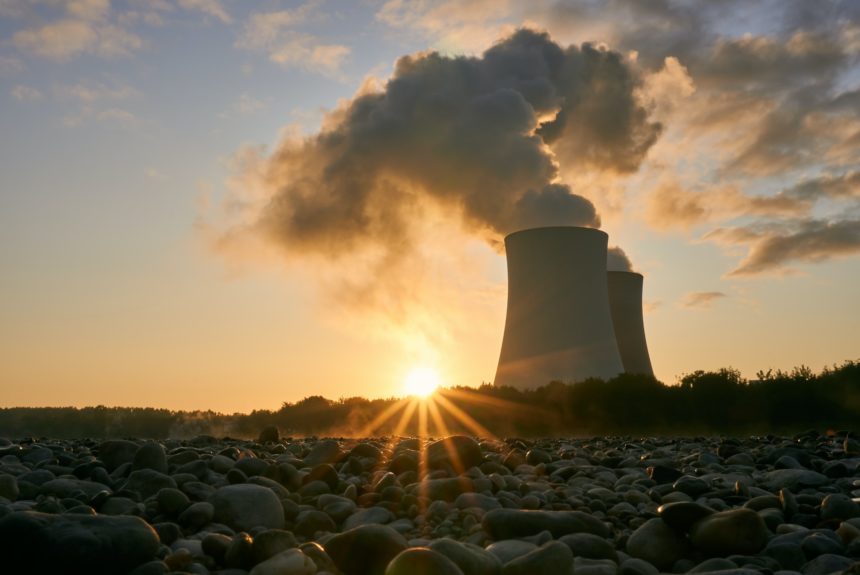Nuclear power has been the primary source of clean power in the United States for many decades. Yet, flat electricity demand, a bureaucratic regulatory system, cheap natural gas competition, and unrelenting criticism from groups concerned about radiation leaks and nuclear waste have left the industry in the doldrums, with reactor closures increasing over the past decade.
What was considered a possible “renaissance” for nuclear power in 2010 became more of an “end times” after the Fukushima disaster in 2011. Significant cost overruns and corporate bankruptcies undermined the confidence of investors and customers alike, even in the face of the industry’s clear emissions benefits.
Only months ago, the future for the nuclear industry was so poor that former U.S. Nuclear Regulatory Commission (NRC) chairwoman Allison Macfarlane said, “without further aid from Congress and the White House, the prospects for the U.S. nuclear industry will dwindle.”
The Biden administration, to its credit, has been more explicit than previous Democratic administrations in its support of using nuclear technology to grow supplies of zero-carbon electricity.
But as things stand, the NRC and the Department of Energy poorly reward innovation within the nuclear industry. The commission views both the old Generation II light-water reactors (LWR) currently producing electricity and the new but still unproven Generation IV non-LWR advanced nuclear reactors as essentially the same technology. This bureaucratic inflexibility flies in the face of significant differences in safety risk profiles and oversight costs.
>>>>>READ: A Better Way to Handle Nuclear Waste
Changing the regulation of new technology will help move NRC staff away from their light-water-centric, minutia-laden review plans and toward more high-level guiding principles for future safety-focused reviews of new technology. This change would also help eliminate the disincentives currently within the industry, one of which is the mandate that NRC recover about 90 percent of its annual budget from the industry it regulates.
As things stand, Biden’s 2022 budget largely misses the mark by spending $500 million toward advanced reactor demonstrator projects that essentially picks and chooses technology that the Department of Energy prefers, rather than what the marketplace wants and needs.
A better example of using federal funds can be seen in the recent $2 million cost-sharing award announced in June between the Department of Energy and Argonne National Laboratory and the nuclear start-up firm Oklo to commercialize advanced nuclear fuel recycling for Oklo’s very small, portable nuclear reactors that are still in the design phase.
The announcement of the Oklo cost-sharing award suggests that at least some administration officials may be learning from past successes in other parts of government, such as when the passage of a space commercialization law in 2010 helped make the commercialization of space more attractive to private investors.
The success of Oklo and other nuclear start-ups shows that private capital can play a bigger role in nuclear power than is currently allowed. But first, the federal government needs to get out of the way and let private enterprise —and private insurance underwriters — price the proper risk of these new nuclear technologies.
And for those who still get queasy about nuclear power’s environmental risks, many prominent scientists and environmentalists such as Kerry Emanuel say the world can’t meet its net-zero goals by midcentury without major investments in new nuclear power.
Energy experts argue that there is no way to transition away from fossil fuels without an enormous expansion in the global electrical system. Estimates by the Paris-based International Energy Agency and Norwegian energy company Equinor both anticipate that electricity demand globally will have to double by 2050 in size and volume to meet climate change ambitions. To do this, as much as 40 percent of daily oil demand for motor fuels—40 million barrels of oil a day—must be replaced with electricity to power electric cars in the coming decades.
“Electricity will take a massive role so we can phase out the other sources of primary energy,” said Eirik Waerness, senior vice president and chief economist for Equinor, speaking in June at an event held by the Houston-based Baker Center for Energy Studies. “We will have to rebuild the electricity sector completely while making it twice as large. We think it’s ‘possible,’ but it’s not ‘realistic’ in any sense of the word.
In other words, the transition to a lower-carbon world is only possible with nuclear power, but until the arrival of new reactor technology, a successful transition can’t happen.
New technology allows nuclear industry users to invest in safer, zero-emission electricity while creating new markets and more revenues, driving additional investment. A virtuous circle can then be fashioned—with some luck and sound science—as seen in other high-tech industries.
William Murray has written about energy markets and environmental policy for the past two decades for Bloomberg, RealClearPolitics, and others. More recently he was the senior speechwriter at the Environmental Protection Agency.
The views and opinions expressed are those of the author’s and do not necessarily reflect the official policy or position of C3.
